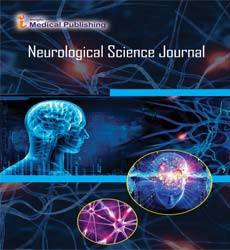Cognitive Profile of ALS
Marco Orsini, Centro Universitário Severino Sombra – USS – Vassouras, Brazil
- *Corresponding Author:
- Marco Orsini
Centro Universitário Severino Sombra – USS – Vassouras, Brazil
Tel: +55 24 2471-8200
E-mail: orsinimarco@hotmail.com
Received date: August 14, 2017; Accepted date: August 26, 2017; Published date: September 20, 2017
Citation: Orsini M (2017) Cognitive Profile of ALS. Neurol Sci J. Vol. 1 No. 1:2
Amyotrophic lateral sclerosis (ALS) is progressive and degenertive disease that affects upper and lower motor neurons, with sporadic and inherited forms. Although ALS predominantly affects the motor system, cognitive and behavioural symptoms have been actually described, and there is evidence that ALS and frontotemporal dementia (FTD) overlap clinically, radiologically, pathologically, and genetically.
Cognitive abnormalities include deficiencies in frontal executive skills, varying from mild deficits to meeting criteria for diagnosis of (FTD). Its present in approximately 30% of patients with (ALS) and, especially when severe, has a negative impact on survival and caregiver burden. This presentation is associated with a negative prognosis, as well as with clinical specificity. Some forms of familial ALS (FALS) have a family history of FTD, ALS-FTD, or both, but there have been few reports of ALS-FTD in FALS patients with mutations of the gene superoxide dismutase-1 (SOD1 FALS).
The GGGGCC hexanucleotide repeat expansion in the chromosome 9 open reading frame 72 (C9orf72), is a frequent cause of familial MND, FTD and especially frontotemporal dementia-motor neuron disease. It is estimated that in the European population, 50 to 70% of patients with familial frontotemporal dementiamotor neuron disease and 15 to 20% with apparent sporadic familial frontotemporal dementia-motor neuron disease, exhibit the expansion of the C9orf72 gene. The penetrance of C9orf72 gene expansion has not yet been determined, but it seems unlikely to be a complete penetrance.
TAR DNA-binding protein of 43 kDa (TDP-43), for example, was proved to be present in neuronal cytoplasmic inclusions and dystrophic neuritis in the hippocampal region and temporal cortex of FTD-Motor Neuron Disease. Although C9orf72 is the most frequent genetic cause of frontotemporal dementia-motor neuron disease, other gene mutations (VCP, SQSTM1, OPTN and UBQLN2) have already been linked to this pathology, but they are rare causes.
The most consistent cognitive deficit has been found using tests of verbal fluency. ALS patients with verbal fluency deficits have shown functional imaging abnormalities predominantly in frontotemporal regions using positron emission tomography (PET). In addiction, neuropathological findings suggest that ALS does not selectively affect the frontotemporal network but rather is part of a broad clinico-pathological spectrum now known as TAR-DNA binding protein (TDP)-43 proteinopathies.
There are several screening tools specifically created for rapid neuropsychological assessment of patients with ALS. Some of these tools, currently available, include the ALS-Brief Cognitive Assessment (ALS-BCA), the ALS-Cognitive Behavioral Screen (ALS-CBS), the ALS-FTD-Q,52 and the Edinburgh Cognitive and Behavioral ALS Screen (ECAS). Patients who are in compliance with the cut-off score of these tests have formal indication of complete neuropsychological assessment.
In conclusion, (ALS) is generally considered to be a paradigm of pure motor neuron disorder; nevertheless, the possible occurrence of cognitive impairment up to a frank dementia in patients is recognized. In order to provide a common framework within which to discuss the characteristics of the cognitive and behavioural syndromes of ALS, and with which to conduct clinical and neuropathological research, an international research workshop on frontotemporal dementia (FTD) and ALS was held in Canada 2007 (Workshop).
Recommendations arising from this research address the requirement for a concise clinical diagnosis of the underlying motor neuron disease, defining the cognitive and behavioural dysfunction, describing additional non-motor manifestations and identifying the presence of disease modifiers.
Open Access Journals
- Aquaculture & Veterinary Science
- Chemistry & Chemical Sciences
- Clinical Sciences
- Engineering
- General Science
- Genetics & Molecular Biology
- Health Care & Nursing
- Immunology & Microbiology
- Materials Science
- Mathematics & Physics
- Medical Sciences
- Neurology & Psychiatry
- Oncology & Cancer Science
- Pharmaceutical Sciences
